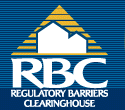Communities Create Affordable
Housing TIF Districts
Tax increment financing, or TIF as it is more commonly known, is a tool utilized by local governments to spur economic growth and redevelop blighted areas. Property taxes in a designated area, known as a TIF district, are frozen at the time a district is established. Increases in property taxes (tax increments) from that point forward — resulting from redevelopment activities within the designated area — are captured by the local government and used to pay down bonds floated to finance new developments or any additional improvements within the TIF district. Almost all states in the U.S. allow this type of financing for redevelopment, and many require that a percentage of TIF funds be set aside for affordable housing development. However, a few states allow local governments to create TIF districts to promote the preservation and development of affordable housing. This article will take an in-depth look at one such program in the state of Maine.
Maine's Affordable Housing Tax Increment Financing Program
Median home prices in Maine increased by 69 percent from 2000 to 2007, while median incomes rose a modest 20 percent during the same period. To increase affordable housing options for its residents, Maine adopted legislation in 2003 allowing municipalities to adopt tax increment financing districts for affordable housing. Overseen by the state's Housing Authority, MaineHousing, the program allows local governments to designate Affordable Housing Tax Increment Financing (AHTIF) districts in up to two percent of the municipality's total land area. In order to qualify for the program, local governments are expected to identify a specific community need for housing that can be addressed by the proposed AHTIF district. Development within the proposed area must be primarily residential and at least 25 percent of the area should be suitable for residential use. In addition, at least one-third of the housing units have to be affordable to households earning 120 percent or less of the area median income. The housing units must remain affordable for a period of 10 years for homeownership units and 30 years for rental units. The original assessed value of all AHTIF districts combined cannot exceed five percent of a city or town's total taxable property value.
To adopt an AHTIF, a municipality must define an Affordable Housing Development District and prepare an Affordable Housing Development Program that will outline plans for the district and include detailed information on anticipated tax increment revenues and proposed uses for the revenue. The municipality then submits an application package to MaineHousing for approval. AHTIF districts can be designated for up to 30 years, and local governments can utilize up to 100 percent of tax increment funds for eligible project costs (as defined by the program) within the district and related costs outside the district. If only a portion of tax increment revenue is used for improvements within the district or for associated costs, the remaining funds revert to the municipality as general property tax revenue. Since the start of the program, 10 communities in Maine have adopted AHTIF districts, the first of which was South Portland.
AHTIF in South Portland, Maine
The city of South Portland applied for an AHTIF district in 2004 to convert the former Maine Youth Center site into a mixed-use development with affordable and market-rate housing units. The 30-year AHTIF will generate $14.26–14.9 million in revenue; $6.5 will be used by the developer to pay for construction costs, the remaining portion will go to the city for transportation improvements and to address any changes in the K-12 school system as a result of the new development. Known as Brick Hill Affordable Development District, the project has resulted in 43 renovated affordable multifamily rental units, 66 new townhomes (affordable to households earning 60 percent or less of the area median income), and 30 affordable condominiums. In a community where over 50 percent of households cannot afford the median rent for a two-bedroom apartment, the addition of these housing units will vastly improve the area's affordability.
Conclusion
Household incomes have not kept pace with housing prices in the state of Maine. By applying the principle of TIF toward the development of affordable housing, Maine is helping to maintain and improve housing affordability for its residents. With the state's AHTIF program, local governments are funding affordable housing development without having to increase taxes or depend on state and federal subsidies.
Previous Article Search Archives
|


